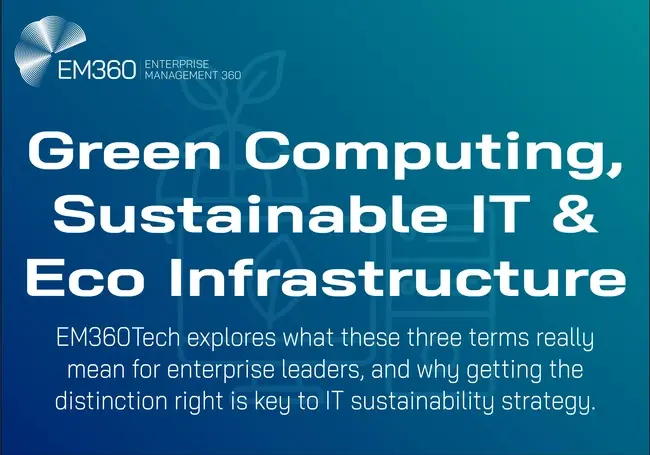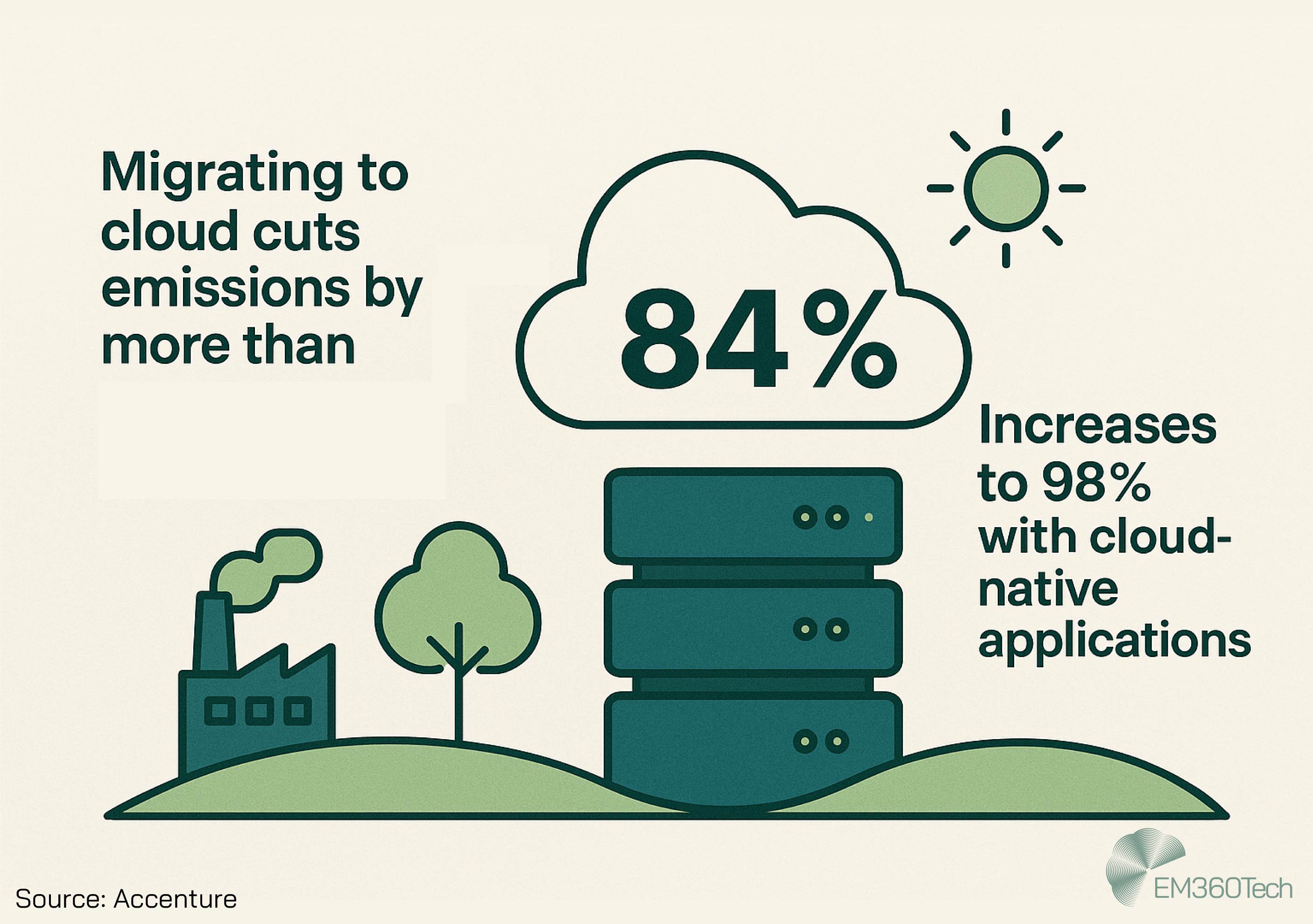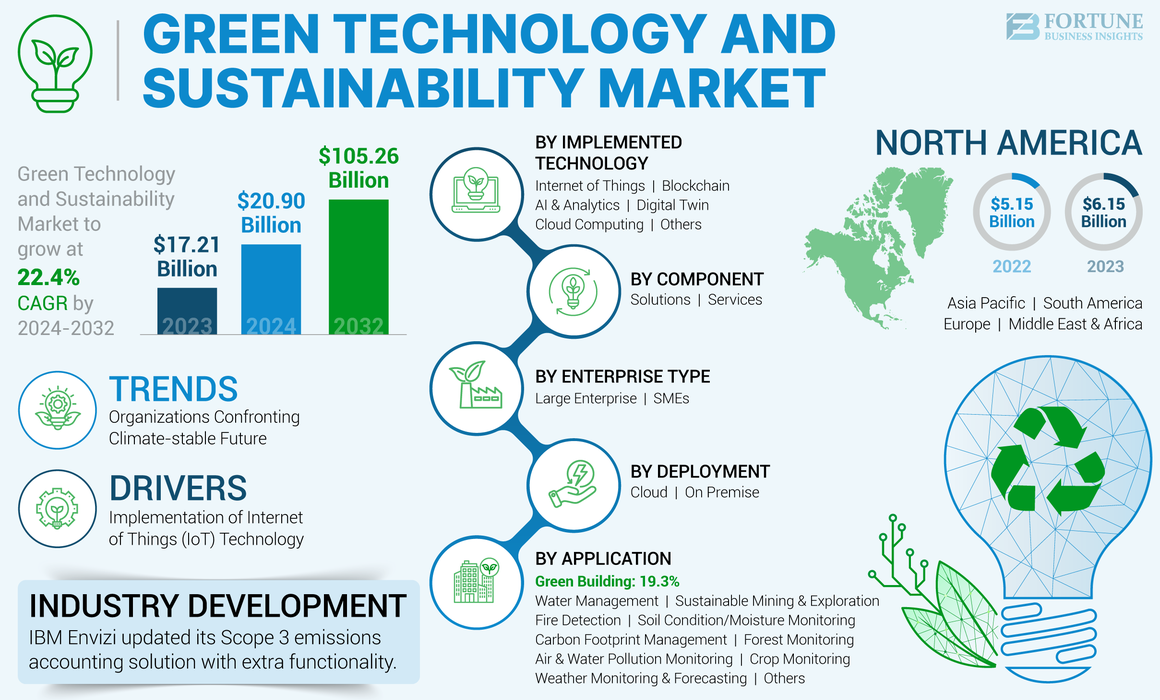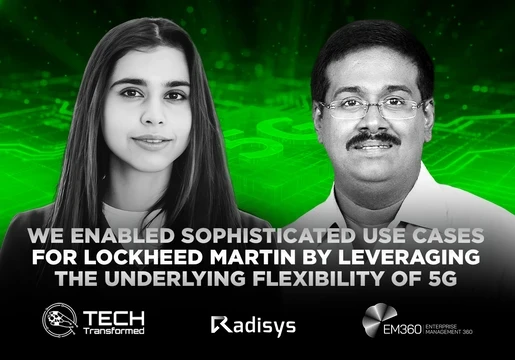Corporate sustainability has become one of the most strategically loaded words in enterprise IT. What once read as a branding buzzword is now a performance metric, a compliance risk, and a boardroom priority.
From data centres to device lifecycles, infrastructure leaders are being measured on emissions, energy use, and the environmental impact of every technology decision they make. And it’s not just about meeting climate goals either. Instead, it’s about aligning with investor expectations, regulatory pressure, and growing demand for operational resilience.
As that pressure has intensified, the terminology around tech sustainability has started to blur. Green computing. Sustainable IT. Eco-friendly infrastructure. They all sound like interchangeable terms. But they’re not actually referring to the same thing.
Understanding the difference between these three boils down to more than just simple semantics. Each one reflects a distinct layer of environmental responsibility. And each has different implications for your strategies, tooling, and budgets. Knowing where they overlap — and where they don’t — is critical to driving measurable impact for your organisation.
We know this because market shifts reflect this urgency. According to SNS Insider, the Green IT Services Market is projected to grow from $18.8 billion in 2023 to $69.4 billion by 2032. That’s a compound annual growth rate of over 15 per cent — driven by enterprise demand for energy-efficient infrastructure and actionable sustainability initiatives.
Real change requires clarity. And in the fast-evolving world of enterprise infrastructure, that clarity starts with understanding what you’re actually solving for.

Why This Distinction Matters for Enterprise IT Leaders
Sustainability in tech is no longer an isolated initiative. It’s something that's getting embedded across procurement pipelines, operational targets, and compliance frameworks. But when the language around it is imprecise, the strategy itself suffers and it's difficult to measure progress, benchmark success, or justify investment across the C-suite.
Infrastructure teams start planning around energy efficiency. ESG leads focus on reporting frameworks. Procurement pursues sustainable hardware contracts. But if these efforts aren’t aligned by a shared understanding of what sustainability means at each layer of the stack, the result is fragmentation—not transformation.
Climate mandates are becoming business imperatives
Sustainability has become a hard-edged business priority, not just a values-led one. Regulations are tightening. Investors are tracking emissions data with the same rigour as financials. And ESG performance is now directly influencing funding, partnerships, and public trust.
In response, technology procurement is changing. Software contracts are being scrutinised for energy consumption. Data centre strategies are being measured against your emissions targets. And IT operations have to meet new disclosure requirements, so they're integrating carbon accounting into their processes.
The urgency is reflected in the numbers. According to a research report from SNS Insider the Green IT Services market was valued at USD 18.8 billion in 2023 and is projected to reach USD 69.4 billion by 2032. This compound annual growth rate of 15.65 per cent reflects more than just innovation; it signals a growing demand for accountability.
IT leaders are key to operational sustainability
Carbon reduction used to sit squarely with sustainability teams. Now it sits with CIOs, infrastructure leads, and digital transformation heads. Technology decisions are environmental decisions. And the levers that reduce emissions—from cloud optimisation to hardware lifecycle planning—are all within the IT function’s domain.

Cloud migration has become one of the most powerful tools for reducing carbon impact. According to The Green Behind the Cloud report from Accenture, moving workloads to the cloud can cut emissions by more than 84 per cent compared with conventional infrastructure. That figure climbs as high as 98 per cent when applications are rearchitected for cloud-native performance.
Major players are already shifting. Microsoft’s Scope 3 emissions have surged with the expansion of AI infrastructure, driving fresh urgency around supply chain emissions and carbon transparency. Meanwhile, Digital Realty’s 2025 roadmap now includes AI-optimised cooling, modular design, and renewable power sourcing across its global data centres.
In this landscape, IT isn’t just a source of emissions. It’s one of the most effective mechanisms to reduce them.
What Is Green Computing?
Green computing is the performance layer of enterprise sustainability. It focuses on optimising how systems use energy and resources, with the goal of reducing environmental impact without compromising capability. That includes everything from how hardware is designed, to how software runs, to how compute loads are distributed and scaled across infrastructure.
It’s not a standalone initiative. It’s a set of decisions that shape the environmental footprint of every digital system you run.
Optimising hardware, software, and compute
At its core, green computing is about using less to do more. That starts with hardware. IT teams are increasingly moving toward low-power components, like ARM-based processors, that deliver efficient performance without the same energy draw as traditional x86 architecture. These chips are showing up in everything from data centres to endpoint devices, with power savings that compound quickly at scale.
Virtualisation is another key driver. By consolidating workloads across fewer physical machines, enterprises can dramatically reduce idle energy use. Containerised environments take that even further, enabling applications to scale with demand while shrinking their compute footprint when they don’t need full resources.
The rise of AI and machine learning has complicated the picture. Training large models requires enormous energy inputs. But that challenge is also an opportunity. New techniques—like model pruning, federated learning, and low-precision training—are making it possible to build smarter, leaner models that use less compute without sacrificing output.
Done well, green computing isn’t just a way to reduce your emissions. It’s a way to optimise performance, extend asset lifespan, and contain energy costs—all while meeting your sustainability goals.
Reducing emissions and electronic waste
Energy use is only one part of the sustainability equation. The other is waste. IT hardware, from servers to smartphones, has a lifecycle. And without a plan for that lifecycle, the environmental cost adds up fast.
Global e-waste volumes are projected to hit 82 million metric tonnes by 2030. And only a small fraction of that gets properly recycled. The rest ends up in landfills, contributing to pollution and lost materials that could have been recovered or reused.

Green computing pushes back against that trend. Through better lifecycle planning, smarter procurement, and circular practices, organisations can extend the usable life of their devices and reduce demand for raw materials. Some, like Circular Computing, are going a step further—remanufacturing carbon-neutral laptops that meet enterprise-grade performance standards while cutting emissions by up to 80 per cent compared to new devices.
This becomes especially important in short-cycle tech environments, like those supporting AI and high-performance compute. When chip and server refreshes happen every 12 to 18 months, lifecycle thinking has to become part of your sustainability strategy, not something handled at end-of-life.
Green computing gives infrastructure leaders the ability to act early—before emissions are locked in, and before waste becomes inevitable.
What Is Sustainable IT?
Where green computing is tactical, sustainable IT is strategic. It’s not just about how systems perform. It’s about how those systems—and the people, vendors, and policies around them—are planned, managed, and measured to align with long-term sustainability goals.
That means thinking beyond energy use. It means considering carbon across the entire digital estate, including cloud environments, device lifecycles, supply chains, and even development practices. Sustainable IT isn’t a single initiative. It’s a way of working that builds environmental accountability into every stage of the technology lifecycle.
A systems-level approach to IT sustainability
Enterprise sustainability isn’t just a question of reducing Scope 1 and 2 emissions. Increasingly, it’s about Scope 3—the indirect emissions generated across your value chain. And in IT, that means hardware suppliers, data centre partners, cloud infrastructure, and even the software your teams are building and running.
That’s why sustainable procurement and partner evaluation are becoming core parts of IT planning. Organisations are asking new questions. How energy-efficient are the chips powering this solution? What are the emissions tied to our cloud provider’s physical footprint? Is our vendor engaging in responsible recycling practices?
DevOps teams are being brought into that equation too. Sustainable IT means looking at how software is built and delivered, not just where it runs. Forward-looking teams are adopting carbon-aware pipelines, where deployment decisions factor in the energy profile of different regions, clouds, or times of day.
All of this is shifting sustainability from a downstream concern to a design-stage consideration. IT teams are no longer just implementing strategy. They’re shaping it.
Why software sustainability is gaining traction
Not long ago, sustainable software sounded like a fringe concern. Now it’s a growing priority—especially as workloads scale with AI and analytics, and as pressure builds to reduce energy and carbon across every layer of digital operations.
The shift is measurable. The green software market is growing by more than 20 per cent year-on-year, driven by demand for code that runs leaner, idles smarter, and consumes less without compromising output.
Some of the most effective practices are also the most accessible. Developers are using adaptive algorithms to scale performance with demand. They're designing interfaces and features to reduce background processing. They're building architectures that use cache and memory more efficiently, and reducing API calls that trigger unnecessary compute.

These small decisions add up—especially in cloud environments, where costs and carbon go hand in hand. The more efficient your code, the less infrastructure it needs, and the more control you gain over performance, spend, and sustainability.
Sustainable software isn’t about compromise. It’s about engineering smarter systems that align performance with responsibility.
What Is Eco-Friendly Infrastructure?
Sustainable IT strategy doesn’t begin with software or end with hardware. It starts with the physical foundations—the data centres, power sources, cooling systems, and architecture choices that shape the energy and emissions footprint of everything that runs on top.
Eco-friendly infrastructure is how that foundation becomes measurable. It’s the practical layer that connects infrastructure design to climate impact. And as workloads grow, especially in AI and analytics, that connection is becoming harder to ignore.
Smarter data centres and cooling technologies
Data centres already account for more than 1 per cent of global electricity use, according to the International Energy Agency. And they predict that the electricity demand from data centres across the globe will more than double by 2030, reaching around 945 terawatt-hours (TWh).
To put that into perspective — that’s only a little more than the entire electricity consumption of Japan today. That scale puts enormous pressure on cooling systems, which often make up the majority of a facility’s energy draw.
Modern infrastructure teams are tackling that pressure with AI-powered cooling systems, which use real-time analytics to manage airflow, temperature, and resource distribution across physical environments. This isn’t theoretical. Operators like Digital Realty, which we mentioned before, are already using these systems to bring down emissions across their 300+ global sites.
Other strategies go deeper—literally. Liquid and immersion cooling technologies are being adopted to handle the extreme heat generated by high-performance workloads like AI training. These techniques don’t just improve performance. They reduce reliance on energy-intensive HVAC systems and extend the lifespan of core components.
The result is a shift from reactive cooling to proactive optimisation. And it’s changing how infrastructure is planned, not just how it’s powered.
Cloud as a greener alternative to on-prem
The cloud isn’t just a scalability story anymore. It’s a sustainability one. Compared to on-premise environments, hyperscale cloud providers offer significantly better energy efficiency, carbon reporting, and resource utilisation. That’s partly because they operate at a scale most enterprises can’t match—and partly because they’ve made sustainability a competitive differentiator.
Providers like Google Cloud now offer carbon-aware dashboards that help teams track emissions by region, workload, or time of day. This kind of visibility allows infrastructure leads to make smarter decisions—not just about where they run workloads, but when.
The benefits of shared infrastructure are clear. When multiple tenants run on the same physical resources, the efficiency gains are shared too. But the picture isn’t always simple. The explosive growth of AI workloads is already shifting the cloud’s carbon profile, especially as enterprises begin provisioning dedicated infrastructure for training and inference.
Cloud is still the greener default for most use cases. But sustainability decisions need to happen at the architecture level, not just the vendor level.
Metrics that matter: PUE, CUE, and beyond
Measuring infrastructure sustainability starts with the right metrics. For most teams, that means understanding PUE, CUE, and WUE—three core benchmarks that track how efficiently your systems convert power into usable compute.
- PUE (Power Usage Effectiveness) measures the ratio between total facility energy and the energy used by IT equipment. The closer to 1.0, the better.
- CUE (Carbon Usage Effectiveness) links energy use to carbon emissions, offering a more climate-centric view of efficiency.
- WUE (Water Usage Effectiveness) tracks how much water is used in cooling per unit of compute output.
These metrics aren’t just for reporting. They help IT and infrastructure leaders spot inefficiencies, set benchmarks, and make decisions grounded in data. But they’re not without challenges. Not all providers report these numbers transparently. And in some cases, they’re optimised for optics rather than accuracy.
The key is to treat sustainability metrics like performance metrics. They only work if they’re trusted, repeatable, and linked to action.
Where These Concepts Overlap — And Where They Don’t
It’s easy to treat green computing, sustainable IT, and eco-friendly infrastructure as synonyms. After all, they often show up in the same conversations, reports, and RFPs. But in practice, they operate at different levels of strategy and execution—and understanding those boundaries is critical for avoiding duplication, fragmentation, or blind spots.
Each one serves a different purpose. Each one speaks to a different audience. And each one requires different tools, metrics, and investments to deliver real results.
Use case distinctions
The clearest way to tell these terms apart is to look at what they’re responsible for solving.
Green computing is owned primarily by infrastructure and engineering teams. It’s about reducing the energy footprint of compute, storage, and workloads through better design, optimisation, and efficiency.
Sustainable IT is broader. It includes workforce planning, procurement, cloud strategy, and software development. It’s often led by CIOs and sustainability officers working together, because it touches both business goals and operational practices.
Eco-friendly infrastructure is where the physical world comes into play. This is the remit of data centre operators, facilities leads, and cloud architects. It includes decisions about power sourcing, cooling, capacity, and physical site optimisation.
Here’s how they show up in practice:
- A developer refactoring an application to consume less compute is working toward green computing goals.
- A CIO embedding ESG criteria into cloud procurement is executing a sustainable IT strategy.
- A facilities lead upgrading to immersion cooling is investing in eco-friendly infrastructure.
If everyone’s pulling toward the same goal, these efforts reinforce each other. If they’re not, they risk becoming siloed or duplicative.
Tech, strategy, and architecture lens
Another way to separate the three is by looking at how they map to different layers of enterprise decision-making. Here’s a simple diagnostic model:
| Layer | Primary Focus | Strategic Owner | Keyword Outcome |
| Green computing | System-level efficiency and design | Infrastructure & DevOps | Optimised performance |
| Sustainable IT | Policy, planning, and governance | CIO, ESG, Strategy Leads | Organisation-wide alignment |
| Eco infrastructure | Physical and architectural enablement | Data Centre, Cloud, Ops | Lower baseline emissions |
This structure also helps identify gaps. If your green computing strategy is strong, but you’ve never audited your hardware disposal process, you’re likely missing part of the sustainable IT picture. If your procurement team is embedding sustainability into contracts, but your facility is still running on grid-only power, then eco-friendly infrastructure needs more attention.
The takeaway isn’t that one is more important than the others. It’s that they only work when they’re connected—with shared goals, shared data, and clear ownership.
Strategic Recommendations for IT and Tech Leaders
Aligning enterprise sustainability with real outcomes takes more than ambition. It takes structure. That means better metrics, stronger partnerships, and forward planning that treats sustainability not as a constraint, but as a capability.
These aren’t soft goals. They’re operational levers—tools that let CIOs, CTOs, and infrastructure leads reduce emissions, control risk, and drive performance at the same time.
Invest in measurement and visibility
If you can’t see it, you can’t fix it. That’s true in performance engineering, and it’s just as true in sustainability. Without the right telemetry, most IT leaders are guessing when it comes to energy use, emissions, and impact.
Cloud providers are starting to fill that gap. Platforms like Google Cloud and Azure now offer carbon dashboards that let teams track emissions by workload, service, and region. Combined with infrastructure-level data, these tools give you a clear view of where carbon is being consumed and where optimisation is possible.
What matters most is making that visibility actionable. ESG platforms should link directly to governance frameworks. Reporting needs to be audit-ready. And sustainability metrics need to be monitored with the same cadence and clarity as uptime or cost.
This isn’t just a reporting requirement. It’s an operational advantage.
Collaborate across the C-suite
Sustainability goals can’t be delivered in isolation. Most of the decisions that affect emissions—from supplier choices to workload placement—sit across multiple departments. Which is why IT, operations, finance, and ESG teams need to be working from a shared playbook.
That collaboration starts with clear governance. Who owns the metrics? Who signs off on procurement? What are the reporting requirements? The more aligned these roles are, the faster your strategy moves.
Procurement is one of the most critical flashpoints. Sustainable IT decisions often depend on what’s being purchased, where from, and under what terms. Without IT input on supplier evaluations or product specifications, those contracts may end up costing more in emissions than they save in dollars.
The goal is to create shared KPIs that span beyond departmental borders, so no one is optimising for their own silo at the expense of enterprise impact.
Prepare for AI-era sustainability challenges
The next sustainability challenge is already here. AI workloads are expanding fast—and with them, the carbon and energy footprint of enterprise compute.
Training large models requires power-intensive chips, high-density cooling, and infrastructure that can scale on demand. That puts strain on both the physical environment and the energy systems that support it.

Data centres are already feeling that pressure. But the real risk is short-cycle infrastructure. The pace of AI innovation is leading to faster hardware refreshes, more frequent upgrades, and increased waste. If lifecycle planning doesn’t evolve with it, sustainability goals will be undercut by the very platforms meant to drive progress.
IT leaders need to stay ahead of that curve. That means building sustainability into AI and edge strategies from day one, not retrofitting them later. It also means evaluating new technologies not just on performance, but on power, cooling, and longevity.
Final Thoughts: Clarity Drives Credibility and Impact
In enterprise sustainability, language isn’t just about optics. It’s about ownership. When green computing, sustainable IT, and eco-friendly infrastructure are clearly understood, they unlock different types of value—across operations, governance, and long-term strategy.
That clarity is what turns buzzwords into benchmarks. It’s what allows infrastructure teams to reduce emissions with precision. It’s what helps CIOs make defensible investment decisions. And it’s what gives ESG leaders the credibility they need to report with confidence.
As climate expectations rise and AI reshapes the digital estate, organisations need sustainability strategies they can measure, defend, and improve. That starts with using the right terms in the right places—and backing them with action.
For more strategic insights on how emerging technologies intersect with resilience, compliance, and innovation, explore the latest research and resources from EM360.







Comments ( 0 )